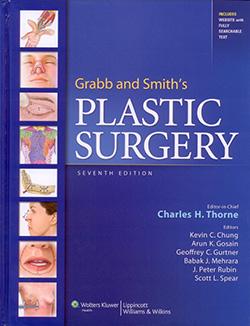
Rhinoplasty is a surgical procedure that alters your nasal shape and/or improves your breathing. Since noses come in different shapes and sizes, people seek rhinoplasty for different reasons. Some nasal shapes are more common in specific ethnic groups and some undesirable nasal shapes are the result of previous rhinoplasty surgery that may have been overdone or inexpertly performed. One such characteristic shape is the “saddle nose.”

The nasal septum is just a wall or partition that is inside the nose dividing the air on the right side of the nose from the air on the left side. Of course the air comes together in the back of the throat and then goes down into the lungs. The septum is not visible from the outside and usually has nothing to do with the appearance of the nose from the outside. The main problem with a deviated septum is that it can cause airway (breathing) obstruction on one or both sides of the nose. It may be surprising thing to know that approximately 80% of the population of the United States has a deviation of their nasal septum. Fortunately, most people do not experience any breathing problems and require no treatment. In cases where the deviation causes breathing problems, a septoplasty can be performed to relieve the obstruction. As mentioned above, a deviated septum usually does not affect the appearance of the nose but there are cases where the deviation causes the nose to be crooked.
Read moreDo I need a Septoplasty for my Deviated Nasal Septum?

Rhinoplasty, more commonly known as a “nose job”, is a procedure during which the appearance and/or function of your nose is/are modified by manipulating the nasal bones and cartilages. There are two main approaches that your plastic surgeon can use to gain access to your nasal structures: 1) the closed or 2) the open approach. The two techniques are more similar than they are different but patients frequently ask questions about when one technique is the most appropriate.
Read moreClosed or Open Rhinoplasty: What is the Difference?

We all know how important the nose is to an attractive face. First of all its central location makes the nose especially visible. But what makes an attractive nose? We may think that a particular nose is attractive but what catches our eye? What makes it attractive? It turns out that the length of the nose and the distance it sticks out (the projection) have to be in proportion. Once that happens the nose is almost magically transformed into one that is attractive. We all know how important the nose is to an attractive face. First of all its central location makes the nose especially visible. But what makes an attractive nose? We may think that a particular nose is attractive but what catches our eye? What makes it attractive? It turns out that the length of the nose and the distance it sticks out (the projection) have to be in proportion. Once that happens the nose is almost magically transformed into one that is attractive.
One characteristic shape that patients frequently want to be corrected is a “droopy nose”.

Of all the concerns that patients have about their noses, two of the most common are 1) a hump visible from the profile view and 2) a wide tip. So thinning the tip is one of the most common goals of Rhinoplasty.
When you look at a face, more often than not, your attention may be directed to the nasal tip. In fact, how your nasal tip looks affect the aesthetics of your entire face. Changing the shape of the nasal tip is a powerful technique that can make subtle but definite changes in the nasal and facial appearance.
But before you decide on undergoing the procedure, here are the things that you should consider.

People commonly fear having their nose “broken” during routine cosmetic or reconstructive nasal surgery. First of all, it is not really “breaking”; it is more like “cutting”, so it is much more precise than breaking, and is much less of a big deal than you might think. Secondly, like any maneuver during rhinoplasty, cutting the bone in order to narrow the upper portion of the nose is only performed when necessary. Not everyone needs it.
When does your nose need to be broken during rhinoplasty?
Read moreDoes the nose always have to be “broken” during rhinoplasty?

Dr. Thorne is the Editor-in-Chief and the author of several chapters in Grabb and Smith's PLASTIC SURGERY, 7th Edition.
